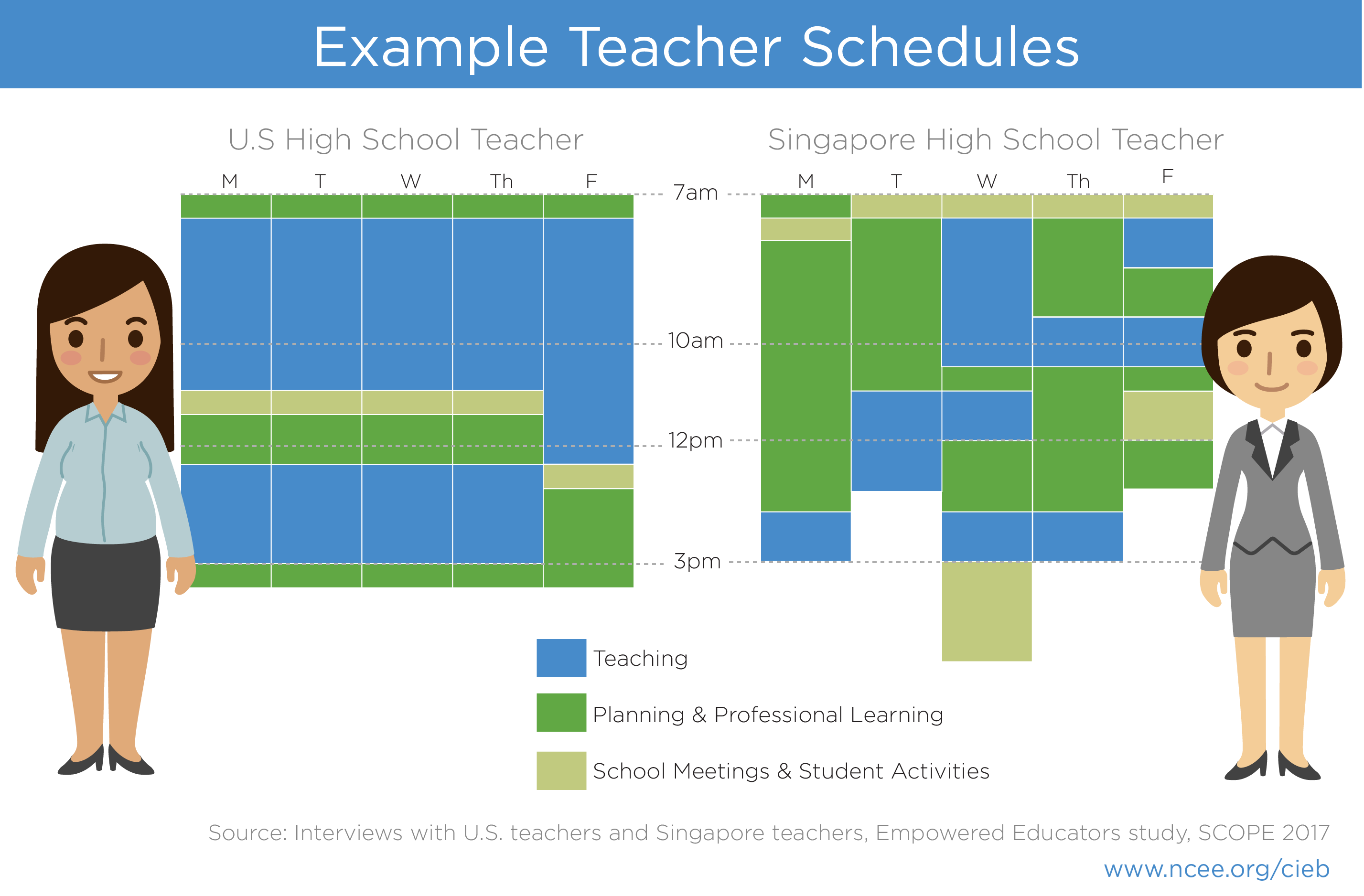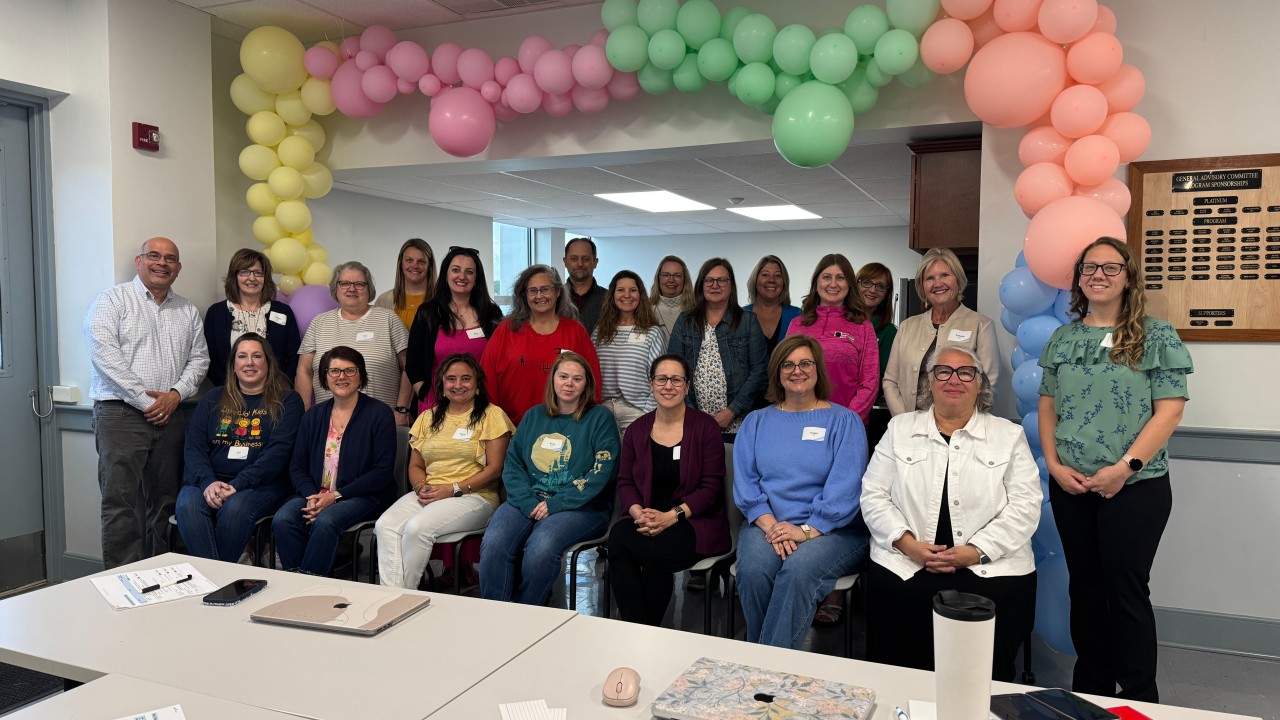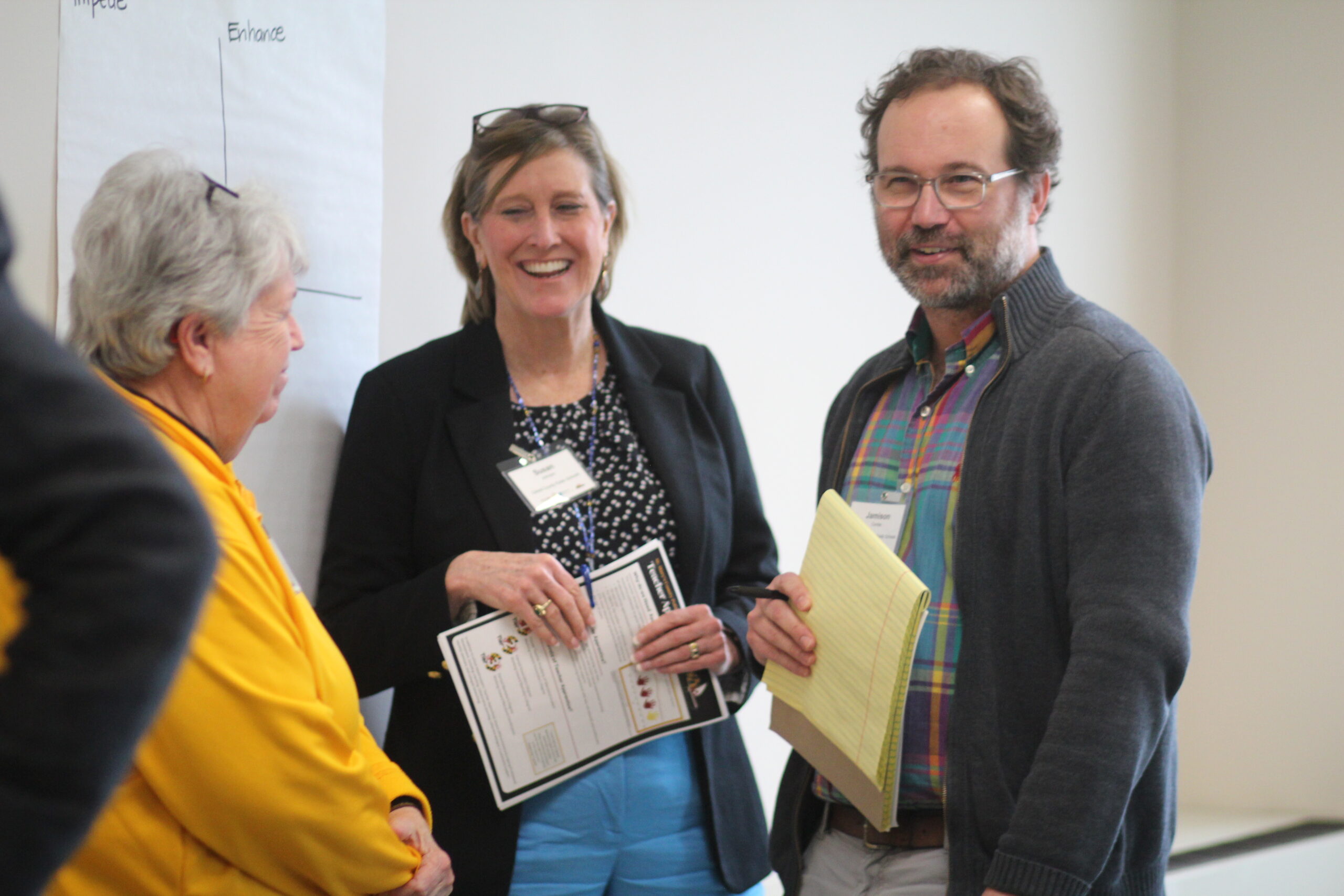
Top-performing education systems have long understood the value of providing teachers with time in their schedules outside of teaching: time to prepare lessons, observe and collaborate with their peers, conduct research to improve their practice, and build relationships with students and families. The chart above compares a U.S. high school teacher’s schedule with that of a high school teacher in Singapore. The Singapore teacher’s schedule is notably more varied, and includes much more time for professional learning and action research on practices to improve learning, collaborative activities like lesson study and debriefing, and lesson preparation. The U.S. teacher spends most of the day in front of a class of students, with little time for non-teaching activities that likely could help improve his or her craft.
Pandemic-related disruptions to school this year have given U.S. districts an opportunity to think more creatively about scheduling options and how teacher time is allocated to better serve both teachers and students. Read more about how new approaches to teachers’ schedules could positively impact U.S. education in this article by NCEE’s Ann Borthwick and about how top performing systems organize their schools in NCEE’s top performer profiles.




